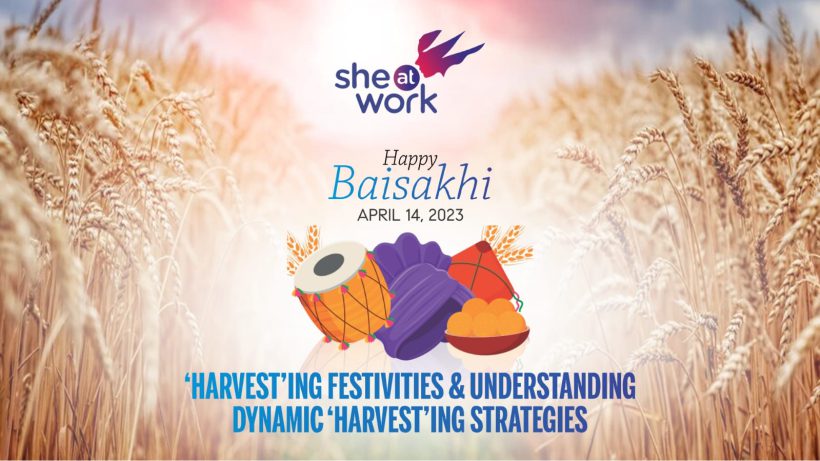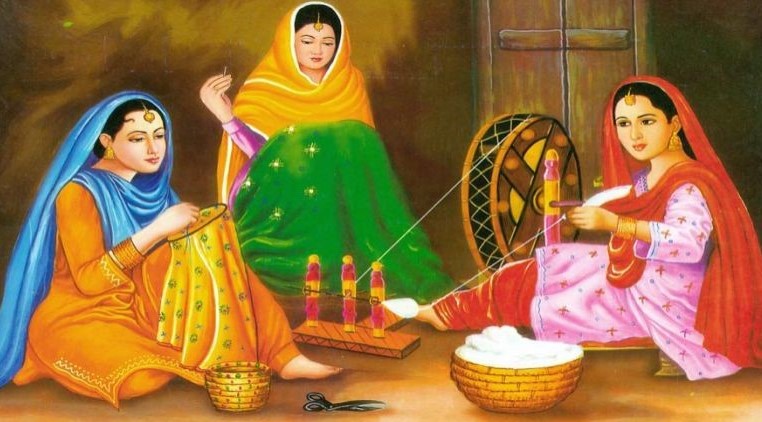Celebrated in India with much pomp and splendour is the festival – Baisakhi, which falls on April 14, 2023.
Interestingly, there is a host of festivals celebrated around this day. Baisakhi is mainly celebrated in states like Punjab, Haryana and parts of western Uttar Pradesh, which are incidentally agriculture-based states. During Baisakhi celebrations, there are rituals and bhangra performed. Baisakhi also indicates a good harvest or the beginning of a new year.
Across various states that celebrate Baisakhi – it is referred to by different names. In Bengal, ‘Poila Boisakh’ or ‘Nabo Barsho’ is celebrated to announce the commencement of Bengali New Year, Bohag Bihu in Assam implies the start of Assamese New Year, Gudi Padwa marks the New Year in Maharashtra, ‘Puthandu’ in Tamil Nadu ushers in the beginning of Tamil New Year, Maithili New Year is celebrated by the Maithilis in Bihar, Jharkhand and even Nepal, Vishu festival symbolizes the beginning of harvest in Kerala, Ugadi or Yugadi is the New Year celebration of Andhra Pradesh, Telangana, Karnataka and so on.
Festivals – religious and cultural are in fact, woven into the fabric of our colourful country. It’s all about celebrations, devotion, cultural ensemble, cuisine & music. People look forward to celebrating with families, friends and loved ones especially now, after missing out on everything due to the unprecedented pandemic.
Here’s a reality check. For businesses – big & small, it is the busiest and probably, the most lucrative revenue-generating season.
Why are festivals important for brands?
For marketers, festivals are a unique opportunity to connect with existing and potential customers. An effective marketing strategy to targeted demographics during festivals enhances brand image, builds reputation & an emotional connect with consumers, plus increase sales too. Fertilizing a festival marketing plan should actually reflect the spirit of the celebration.
Brands have been actively leveraging festivals to launch contests & promotions designed around the theme of the festival. For many consumers, festivals are a time to go “shopping”. For brands, festivals are a superb opportunity to create consumer experiences that they love. Significantly, age-old cultural festivals are given a fresh twist with innovative brand-new campaigns. Festive marketing strategies have evolved over the years where brands prefer to maintain consumers’ sentiments first. Through events, promotions and other activities, the brand reminds consumers of its role in their lives that leads to greater awareness, recall, engagement & loyalty.
Small businesses built round festivals
Clearly, this is also the season where the small businesses can rake in most profits.
In India, our decisions are uniquely driven by sentiments, attaching products to the culture of the state – and we have so many states here. It also offers brands a great chance – to make better connections to current and potential customers and make a substantial impact on their purchasing decisions.
Generally it is seen that during festivals, there is a surge in sales. And brands are all busy with a variety of promotional offers. In India typically, we have one or another festival coming up every month of the calendar!!
It provides a wide diversity of possibilities that can offer big treats for your company, even with a small investment.
Understanding the dynamics of ‘harvest’ing strategies in entrepreneurship
Talking of harvest festivities, a harvest strategy involves reducing spending on an established product in order to maximize profits. Typically, today harvest strategies are used on outdated products as profits are reinvested in newer models or newer technologies.
Harvesting is equally important as setting up a new entrepreneurial venture. During the harvesting process, the entrepreneur recovers value through the sale of an entrepreneurial entity or its assets. Having spent several years building and adding value to the business, the entrepreneur must design a harvesting strategy that would provide maximum returns on the investment of time, effort and money. Several reasons may compel the entrepreneur to ‘harvest’ the business. Harvesting is also a process to achieve an end goal that will repay the entrepreneur for all the hard work. Of course, the best harvesting strategy is the one that best fits each small business and the entrepreneur’s personal goals.
Harvesting is made up of many different strategies that can be used by entrepreneurs to exit their business. Harvest strategy also refers to a business plan for investors (such as venture capitalists or private equity investors). This method is commonly referred to as an ‘exit’ strategy, as investors seek to exit the investment after its success. Investors will use a harvest strategy to collect profit from their investment, so that perhaps funds can be reinvested into new ventures.
So,
reaping profits is the ultimate goal of all businesses and it is top-of-line for entrepreneurs too. For ‘crop’ping or termination of investments in a product, product line, or line of business always has the business leader planning action in such a way, that leads to ‘harvest’ing maximum profits.










